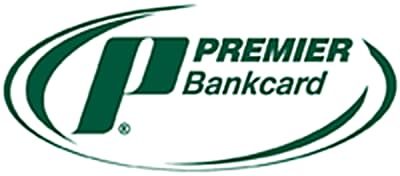Credit card issuer boosts customer relationships, revenue
PREMIER Bankcard sees $50 million annual revenue lift, additional $24 million through retention strategies
The Credit Card Accountability, Responsibility and Disclosure Act (CARD) of 2009 was designed to protect subprime borrowers by forcing lenders to provide more transparency and more reasonable, fairer rates and fees to borrowers. This has proven a costly burden for US lenders as they retool to adjust for narrower margins and a new outlook on customer retention and loyalty.
Credit card issuer PREMIER Bankcard serves customers who want to develop better credit habits. It's using SAS Business Analytics to respond to the requirements of the CARD Act, and to identify and better market to its most profitable customers – resulting in a $50 million lift in revenue annually.
According to Rex Pruitt, Manager of MIS Profitability and Risk Requirements at PREMIER Bankcard, when marketing in the subprime space lenders have to be able to position themselves to cover losses; usually about 35 percent in the first year. Subprime lenders have traditionally relied on fees and rate increases for profitability.
To address the CARD Act requirements, PREMIER Bankcard uses SAS® Business Analytics for:
- Fee-justification analysis to analyze annual percentage rates (APR) and late fee strategies to overcome fee regulation by increasing APRs.
- Customer loyalty analytics to identify ideal and profitable customers to offset the cost of new capital requirements and tighter margins.
- Rapid response to srategic planning to view customer and market data on a daily basis to help stabilize the number of new accounts and strengthen the customer portfolio.
- Improved daily forecasting model to choose the right customers and improve daily account forecasting.
A challenging business
Serving a market of customers with less than perfect credit can be a challenging business. If PREMIER issues too many cards to those who aren't ready to reclaim creditworthiness, they face losses and challenges from regulators. If they focus exclusively on people who have nearly finished their climb into the prime market, they won't earn money from renewal revenue because customers eventually graduate to prime card issuers.
"We are trying to identify people who are on the upswing in their credit experience. They've kind of hit bottom from a credit perspective, and they want to climb back into the creditworthiness,'' he explains.
Pruitt first used SAS to target a unique segment of card product applicants. Using customer data, pooled with third-party credit performance indicators, Pruitt's team was able choose the right customers to market applications to and immediately saw an increase in the number of target applicants that responded.
The sweet spot
The goal is to find the sweet spot: customers who will renew and aren't likely to become delinquent. Prior to using SAS, PREMIER had a difficult time honing in on those customers and relied on third-party vendors for model development and credit scores – a costly and slow method which didn't allow PREMIER to use its own customer data effectively for segmentation.
With SAS, Pruitt's group has optimized its customer segmentation practices to understand who PREMIER's best customers are. One discovery showed that customers who are immediately and frequently delinquent tend to contribute a lot of revenue from fees, but pose too much of a financial risk over the long run. On the other end of the spectrum, customers who stay current soon qualify for a prime market product and graduate to a prime card issuer. Pruitt found that PREMIER's ideal customers existed between these two segments.
"Before, we didn't recognize the significance of the fact that our best customers were those who had been with us an average of three years,'' Pruitt said. "We've isolated very specific customer attributes that describe our best customers and understand more clearly their lifetime value to our business. Our veteran customers have been referred to as our annuity in that they are loyal to our PREMIER service and have a stable financial position."
With the opportunity to lift our annual revenue by over $50 million, coupled with the potential to increase the number of new, good customers in our portfolio, SAS has more than paid for itself.
Rex Pruitt
Manager, MIS Profitability and Risk Requirements
Loyal customer value
According to Pruitt, a loyal customer is worth an average of $11.58 per month over a two-to-three-year timeframe.
"If we retain one customer for one extra month, we make $11.58," said Pruitt. "That's based on the top 75 percent of our portfolio. In an annual period, if we improve our retention strategy by 10 percent it equates to annual revenue generation of $4.8 million."
Because SAS is much more cost-effective than paying a third party to develop models, it wasn't difficult justifying the SAS investment to the executive management team. And PREMIER can now target its best customers with various cradle-to-grave programs.
"With the opportunity to lift our annual revenue by over $50 million, coupled with the potential to increase the number of new, good customers in our portfolio, SAS has more than paid for itself,'' he says. "The retention modeling strategies have the potential to generate an additional $24 million in annual revenue."
Respected by regulators
According to Pruitt, PREMIER can now also respond to the regulatory environment quickly and more effectively.
"Regulators respect SAS as an analytical tool," he said. "We justified our investment in SAS by targeting an Application Fraud Mitigation Model. It was estimated that SAS would help us reduce fraud significantly enough to have a $1 million annual impact – we achieved that result."

Challenge
Identify its best, low-risk customers to increase revenues and profit in the face of increased regulatory demands.
Solution
Benefits
The card issuer can segment its most profitable customers, gather data for regulators and portfolio analysis quickly and avoid costly third-party credit scoring and risk model development. This resulted in a revenue lift of $50 million annually, an additional $24 million through retention strategies and a decrease of $1 million in fraud losses.
